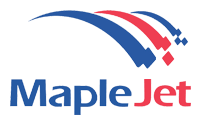The advent of thermal inkjet printer for 2D barcode and QR code printing has marked a significant milestone in the manufacturing sector, streamlining the way companies label and track their products. This cutting-edge technology enables precise and efficient printing of intricate codes directly onto a wide array of materials, from packaging to the products themselves, without the need for labels or additional processing steps. The integration of these printers into production lines not only enhances inventory management and product traceability but also drives operational efficiencies, reducing waste and saving valuable time and resources. As industries continue to embrace this innovation, thermal inkjet printing stands at the forefront of revolutionizing product management and control, setting new standards for accuracy and reliability in the digital age.
Industries Embracing Barcode and QR Code Technology
Direct barcode and QR code printing on products has transformed various industries beyond traditional manufacturing. Retailers now leverage these codes for streamlined inventory management and enhanced customer engagement through easy access to product information.
- In healthcare, QR codes on medications and equipment enable precise tracking and management, crucial for patient safety.
- The food and beverage sector benefits immensely, from using these codes for tracing food origins, managing expiry dates, and providing nutritional information.
- In logistics, they facilitate efficient tracking of shipments and assets across complex supply chains.
- The automotive industry utilizes them for parts tracking and quality control throughout the manufacturing process.
- Additionally, in the electronics sector, these codes are integral for inventory management and anti-counterfeiting measures.
This widespread adoption across diverse industries signifies a move towards more sophisticated and efficient product management and control systems.
Revisiting the White Paper: Understanding GS1 Sunrise 2027's Impact on Barcode and QR Code Printing
GS1's "Sunrise 2027" initiative, as outlined in the white paper from MapleJet & Funai, represents a significant shift in product coding standards, emphasizing the transition from traditional UPCs to more versatile 2D barcodes by 2027. This change addresses the rapidly evolving demands of coding in various industries, offering a unified solution for both supply chain management and consumer interaction needs.
The implementation of 2D barcodes facilitates a single standardized method to accommodate diverse operational and marketing objectives, as evidenced by pilot programs with major retailers like Walmart, Proctor and Gamble, Pepsi, and Woolworths. Each retailer, while pursuing unique goals ranging from supply chain management to customer engagement initiatives, successfully utilized the 2D codes, highlighting their versatility.
The move towards 2D barcodes, unlike the limited UPC-A codes which primarily contain SKU pricing information, brings enhanced traceability and efficiency, extending far beyond basic transactional functions.
One implication of the shift towards 2D barcode printing is the significant impact it will have on existing Continuous Inkjet (CIJ) printers, especially those operating at high speeds. Since 2D barcodes require high-resolution printing, the capabilities of CIJ printers are challenged. Known for their high-speed printing, CIJ printers typically offer limited resolution and can handle only a certain number of characters or lines at high speed. On the other hand, Thermal Inkjet (TIJ) printers, particularly the MapleJet Hx models, have evolved to meet these new demands. They have been developed to print high-resolution 2D barcodes even on high-speed production lines, bridging the gap between speed and resolution that CIJ printers currently face.
Read white paper here
Why Thermal Inkjet Printers Out perform Continuous Inkjet for Barcode and QR Code Printing
Thermal inkjet (TIJ) printers, such as the MapleJet Hx Nitro, have emerged as a more advanced and efficient technology for barcode and QR code printing compared to Continuous Inkjet (CIJ) printers. These TIJ printers are recognized for their compact design, affordability, and versatility, offering a non-contact printing method that utilizes heat instead of pressure. This distinct approach involves rapidly heating the ink within their cartridges to form precise droplets, enabling the creation of sharp and accurate codes. One of the primary advantages of the MapleJet Hx TIJ printer is its ability to produce high-resolution codes. They excel in printing clear, detailed codes, essential for reliable scanning and tracking. In terms of speed, TIJ printers have made significant strides, challenging the previously held notion that they are slower than CIJ printers. High-performance models like the MapleJet Hx Nitro can achieve speeds that compete with CIJ printers, making them a viable choice for high-volume production environments. The combination of high resolution, material versatility, and improved speed positions the MapleJet Hx Nitro as a superior option for barcode and QR code.
Introducing Hx Nitro 25w: Single-Head 1-Inch Printing
The Hx Nitro 25w thermal inkjet printer stands out with its unique ability to print up to a maximum height of 25mm (1 inch), distinguishing it in a market where most thermal inkjets are limited to 12.5mm (half an inch) prints. This feature is particularly beneficial for applications requiring larger barcode prints, as it eliminates the need for stitching, thereby enhancing print quality and efficiency.
Enhanced by Funai-powered cartridges, the Hx Nitro 25w ensures consistent ink delivery and superior print quality. This combination of innovative design and advanced cartridge technology makes the Hx Nitro 25w a robust solution for industries requiring larger, high-resolution barcode and QR code printing.
Is a Thermal Inkjet Printer the Right Fit for Your Production Line?
Considering the insights we've shared, it's time to shift the focus from "How does thermal inkjet printing work?" to "Is a thermal inkjet (TIJ) printer the right choice for my production line?" If your facility requires reliably scannable codes, yet doesn't demand the high-speed capabilities of an industrial Continuous Inkjet (CIJ) printer, a TIJ printer could be the ideal solution. On the other hand, if you're uncertain whether a TIJ printer will meet your specific needs, our team of printing experts is ready to guide you in selecting the most suitable printer and ink for your unique operation.
For a deeper understanding of thermal inkjet printing and assistance in choosing the best inkjet printer model for your needs, feel free to reach out to MapleJet at sales@maplejet.com.





Recent Comments